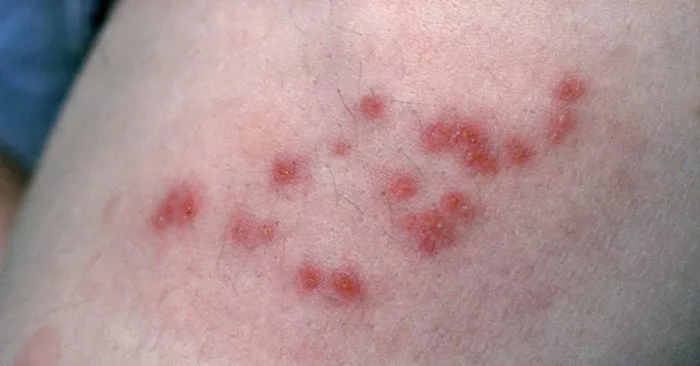Shingles, caused by the varicella-zoster virus (VZV), often manifests as a painful rash characterized by blisters on one side of the body. This condition can be excruciating, with the pain ranging from mild discomfort to debilitating agony. While the rash typically clears up within a few weeks, the pain associated with shingles, known as postherpetic neuralgia (PHN), can persist long after the rash disappears. Fortunately, there are various approaches to managing and alleviating the pain caused by shingles. In this article, we will explore some of the most effective strategies for pain relief.
Understanding Shingles Pain
To effectively manage pain from shingles, it’s crucial to understand its underlying mechanisms. Shingles pain is primarily neuropathic, meaning it originates from damage to the nerves caused by the VZV. This damage can lead to abnormal signaling between the nerves and the brain, resulting in persistent pain even after the rash has healed. Additionally, inflammation associated with the infection can further exacerbate the pain.
Medications for Pain Relief
One of the mainstays of shingles pain management is the use of medications. Several types of medications can help alleviate the discomfort associated with shingles:
1. Antiviral Drugs: While antiviral medications primarily target the VZV infection, they can also help reduce the severity and duration of the shingles rash, which may indirectly alleviate pain.
2. Analgesics: Over-the-counter pain relievers such as acetaminophen (Tylenol) or nonsteroidal anti-inflammatory drugs (NSAIDs) like ibuprofen (Advil, Motrin) can provide temporary relief from mild to moderate shingles pain.
3. Anticonvulsants: Drugs commonly used to treat seizures, such as gabapentin (Neurontin) and pregabalin (Lyrica), have been found to be effective in managing neuropathic pain, including that caused by shingles.
4. Tricyclic Antidepressants: Medications like amitriptyline (Elavil) and nortriptyline (Pamelor) can help alleviate shingles pain by interfering with the transmission of pain signals in the central nervous system.
5. Topical Treatments: Creams, gels, or patches containing lidocaine, capsaicin, or other numbing agents can be applied directly to the affected area to provide localized relief from shingles pain.
6. Opioids: In severe cases where other medications fail to provide adequate pain relief, opioid medications may be prescribed for short-term use. However, due to the risk of dependence and other adverse effects, opioids are generally reserved for refractory cases and require close monitoring by a healthcare professional.
Non-Pharmacological Approaches
In addition to medications, several non-pharmacological interventions can complement pain management strategies for shingles:
1. Topical Cooling: Applying cool, moist compresses to the affected area can help soothe the burning sensation and provide temporary relief from shingles pain.
2. Relaxation Techniques: Practices such as deep breathing, meditation, or guided imagery can help reduce stress and promote relaxation, which may indirectly alleviate shingles pain by modulating the body’s response to discomfort.
3. Physical Therapy: Gentle stretching exercises and massage therapy can help improve flexibility, reduce muscle tension, and alleviate pain associated with shingles. Physical therapists can also provide guidance on posture and movement strategies to minimize discomfort.
4. Transcutaneous Electrical Nerve Stimulation (TENS): TENS therapy involves the use of a small, battery-operated device that delivers low-voltage electrical impulses to the nerves through electrodes placed on the skin. This can help disrupt pain signals and provide relief from shingles-related neuropathic pain.
5. Acupuncture: Some individuals find relief from shingles pain through acupuncture, a traditional Chinese medicine practice that involves inserting thin needles into specific points on the body to restore balance and promote healing.
Self-Care Tips
In addition to medical treatments and non-pharmacological interventions, certain self-care measures can help manage shingles pain and promote healing:
1. Get Plenty of Rest: Adequate rest is essential for supporting the body’s immune response and facilitating recovery from shingles. Make sure to prioritize restful sleep and avoid overexertion, which can exacerbate pain and prolong healing.
2. Maintain Good Hygiene: Keep the shingles rash clean and dry to prevent bacterial infection, which can complicate the healing process and increase discomfort. Avoid scratching or picking at the blisters to minimize the risk of scarring and secondary infection.
3. Eat a Balanced Diet: Consuming a nutritious diet rich in vitamins, minerals, and antioxidants can support overall health and immune function, which may aid in faster recovery from shingles.
4. Stay Hydrated: Drink plenty of fluids, particularly water, to stay hydrated and support the body’s natural healing processes. Dehydration can exacerbate symptoms and prolong recovery time.
5. Avoid Triggers: Identify and avoid factors that may exacerbate shingles pain, such as stress, fatigue, or exposure to extreme temperatures. Implementing stress-reduction techniques and pacing activities can help minimize symptom flare-ups.
When to Seek Medical Attention
While most cases of shingles can be managed with home remedies and over-the-counter medications, it’s essential to seek medical attention if you experience any of the following symptoms:
Severe or persistent pain that is unresponsive to over-the-counter pain relievers
Development of new symptoms such as fever, headache, or confusion
Signs of bacterial infection, such as increased redness, swelling, or drainage from the rash
Eye involvement, including pain, redness, or sensitivity to light
Your healthcare provider can evaluate your symptoms, adjust your treatment plan as needed, and provide guidance on additional interventions to help manage shingles pain effectively.
Conclusion
Shingles pain can be debilitating, but with a comprehensive approach that includes medications, non-pharmacological interventions, and self-care measures, it is possible to find relief and promote healing. By understanding the underlying mechanisms of shingles pain and implementing appropriate strategies, individuals affected by this condition can regain control over their symptoms and improve their quality of life. If you or someone you know is struggling with shingles pain, don’t hesitate to reach out to a healthcare professional for personalized guidance and support.

























